Army Sgt. Charles Bell navigates through a low wire obstacle during the European Best Defender Competition in Ansbach, Germany, April 14, 2021.
Providing up-to-date information, news and original content on American Military issues.
Army Sgt. Charles Bell navigates through a low wire obstacle during the European Best Defender Competition in Ansbach, Germany, April 14, 2021.
Air Force Senior Master Sgt. Jennifer Bowen refuels a C-5M Super Galaxy over Nova Scotia, Canada, April 15, 2021.
Mississippi Army National Guardsmen perform aerial maneuvers in an AH-64 Apache near Tupelo, Miss., March 29, 2021.
Navy Seaman Reina Underwood participates in security reaction force training aboard the USS Carter Hall in the Atlantic Ocean, April 1, 2021
An Army military working dog and its handler undergo certification tests in Stuttgart, Germany, April 15, 2021.
New York Army National Guardsmen practice ascending the side of a building during a training exercise in East Amherst, N.Y., April 16, 2021.
Marine Corps Lance Cpl. Saul Martinez competes in a swimming finals during the 2021 Regional Marine Corps Trials at Marine Corps Base Camp Pendleton, Calif., April 19, 2021. The trials provide an opportunity for recovering service members to demonstrate their achievements and serve as the primary venue to select Marine Corps participants for the DOD Warrior Games.
The littoral combat ship USS Wichita prepares to recover an 11-meter rigid hull inflatable boat while underway in the Caribbean Sea, April 16, 2021.
A soldier prepares for simulated threats during a training exercise at Novo Selo Training Area, Bulgaria, April 17, 2021.
Army Spc. Julio Rosales, left, and Pfc. Rolani Taitingfong check patient information before administering COVID-19 vaccines during a vaccination clinic at the University of Guam Calvo Field House in Mangilao, Guam, April 16, 2021.
Army Reserve Spc. Spencer Kasper runs for cover during an urban assault mission at Camp Williams, Utah, April 16, 2021.
Air Force Capt. Charles Kirchner, a D.C. National Guardsman, performs preflight checks on an F-16 Falcon fighter jet before takeoff during Green Flag at Nellis Air Force Base, Nev., April 15, 2021. The exercise provides combat training to joint and coalition warfighters.
A Navy MH-60S Seahawk helicopter conducts a one-wheel during a simulated search-and-rescue training exercise over Fallon, Nev., April 15, 2021.
The spouse of an airman paints a picnic table during a base beautification event at Andersen Air Force Base, Guam, April 20, 2021.
April 20, 2021 | BY Beth Reece
The department expects to begin receiving about 390,000 doses weekly — up from an average of 155,500 a week — with DLA continuing to receive, pack, ship and track vaccines for individuals outside the continental U.S. or deployed with the Navy, said Army Col. Anthony Bostick, head of DLA's operational planning team for vaccine operations.
Although DOD officials paused the administration of the single-shot Johnson & Johnson vaccine on April 13, upon recommendations from federal officials due to reports of rare and severe blood clots, he said the impact should be temporary and minimal as planners shift allocations and shipments to fill potential voids.
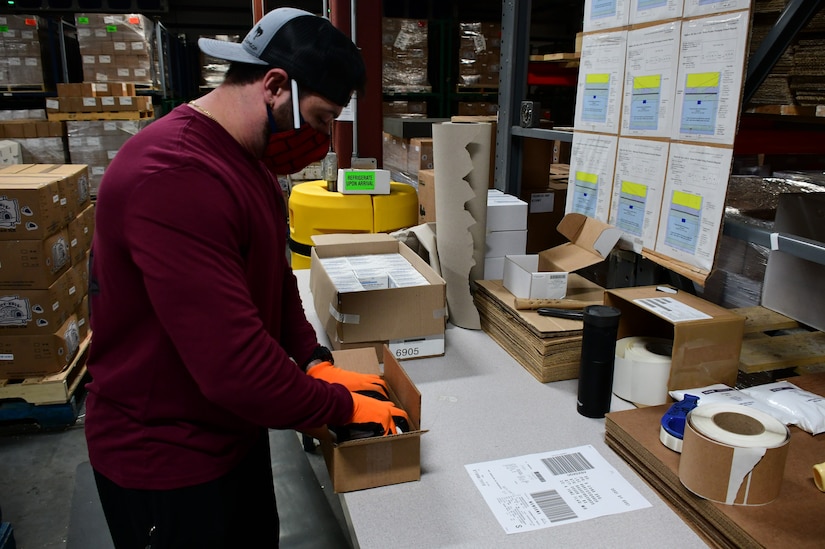
"These are among various modifications we've made to the DOD plan supporting worldwide vaccine distribution," Bostick said. "As manufacturers make more doses available or new vaccines are developed, we continue to adjust our plan so more DOD personnel and their dependents can be vaccinated."
By April 15, DLA had shipped over 415,000 Moderna and J&J vaccine doses to DOD vaccination sites in 35 countries. About 15% of those doses were delivered through intermediate distribution facilities in Europe, Asia and the Middle East, where DLA employees refresh packaging components to maintain proper temperatures. From there, shipments are scheduled for onward movement to treatment facilities and clinics using local transportation assets including FedEx.
"Since fall 2020, DLA representatives have been embedded in the DOD COVID-19 Vaccine Operational Planning Team, which has worked extensively to leverage interagency partnerships to plan, execute and track vaccine shipments to more than 89 military treatment facilities and fleet sites overseas," said Air Force Col. Jennifer Garrison, the Department of Homeland Security's deputy chief of combatant command operational support.
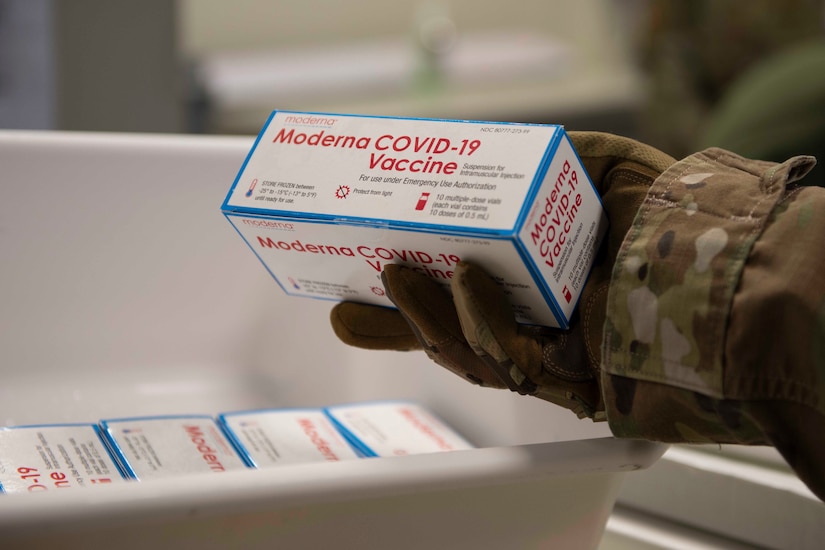
DHA requested DLA's help creating a distribution plan in October and has relied on DLA's 20 years of experience distributing annual flu vaccines.
"DLA has been doing cold-chain management for years, and the reason nobody talked about it is because we've been so good at it. And it worked because we were able to plan against a known requirement year after year," said Army Col. Robb Meert the director of DLA distribution operations.
DLA plans COVID-19 vaccine shipments according to orders placed by the services, which receive requirements from combatant commands and verify allotments through a DOD allocation board. Meert said DLA leaders have stressed to DHA officials the need for accurate forecasting of doses and locations in each phase of vaccine administration, because that data allows distribution teams to designate space on aircraft and coordinate deliveries so someone is on the other end to receive them.
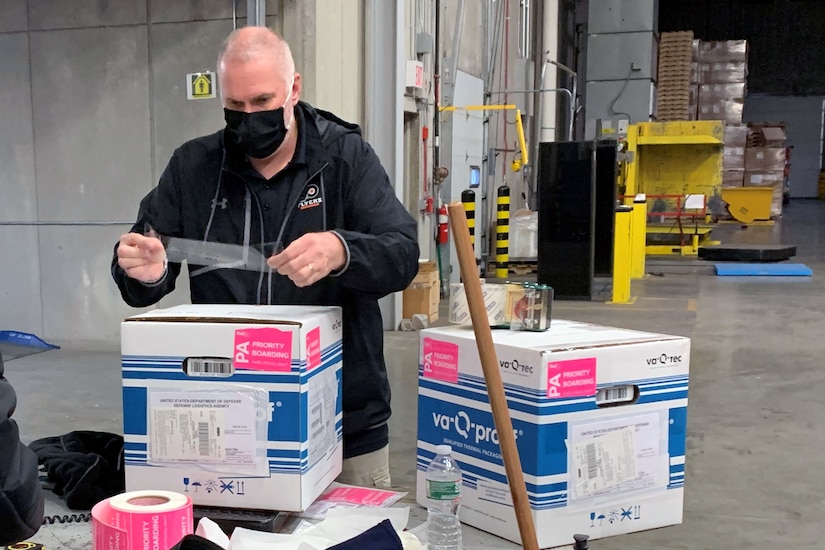
Though scheduling manufacturer deliveries of the vaccine to U.S. locations has its own complexities, Meert said overseas deliveries are harder to project and execute, especially as new delivery routes are established.
Overseas shipments managed by DLA often require a combination of commercial and military flights, added Steve Shea, with DLA logistics operations. While shipping to major installations like Camp Humphreys in South Korea, or Landstuhl Regional Medical Center, Germany, can be relatively simple once local officials have determined needs, getting the vaccine to Djibouti or Kenya can be difficult with temperature constraints, he said.
Getting the vaccine through customs is also a challenge in countries that don't yet recognize them as valid, Shea continued. DLA employees resolved customs clearance issues at 43 locations in 17 countries during its first week of distribution in mid-December as many countries shut down for the holidays.
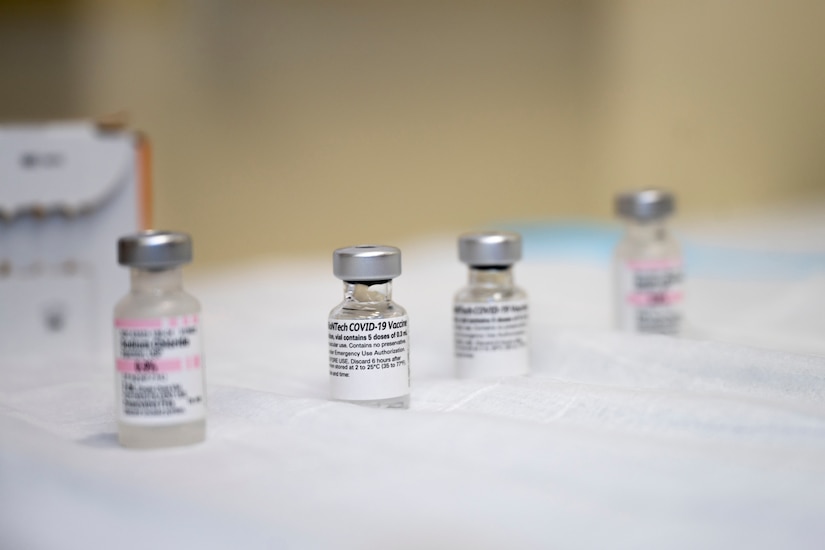
"The COVID-19 operations team at DLA distribution has leveraged relationships from previous tours overseas, many times calling old coworkers still at [overseas] headquarters offices to see how they could grease the skids to make this work," Meert said. "We've also worked directly with DLA's foreign political advisor, embassies and combatant commands to keep things moving."
DLA started partnering with military treatment facilities and organizations like the U.S. Transportation Command and FedEx in the fall of 2020 to obtain special shipping containers and ensure customers had freezers ready for maintaining vaccines' cold temperatures.
As DOD's leading logistics agency, DLA has been involved in the nation's pandemic response since February 2020 and has provided over $3.5 billion in items ranging from face masks and ventilators to test kits for DOD customers, as well as federal partners like the Department of Health and Human Services and Federal Emergency Management Agency.
Army 1st Lt. Kate Hammermaster, a medical surgical nurse assigned to the 626th Brigade Support Battalion, reconstitutes and draws vaccines at the Orlando Community Vaccination Center in Orlando, Fla., March 31, 2021. U.S. Northern Command, through Army North, remains committed to providing Defense Department support to the Federal Emergency Management Agency as part of the government's COVID-19 response.
Soldiers with the New York National Guard assemble COVID-19 test kits at Hudson Valley Community College in Troy, N.Y., Apr. 13, 2021. The test kits, which will be shipped across the state, are being mass produced. Each box contains items needed to conduct a COVID-19 test, allowing the guard to produce 10 million test kits in a year.
Air Force Airman 1st Class Ailene Rich, an aviation resource specialist assigned to the162nd Operations Support Squadron, prepares personal protective equipment for distribution at a Pima County warehouse in Tucson, Ariz., April 19, 2021. More than 900 Arizona National Guardsmen continue to assist at vaccination sites, testing locations and food banks throughout the state.
Washington Army National Guardsmen prepare Stryker vehicles for a reconnaissance mission at Forward Operating Base Santa Fe, Fort Irwin, Calif., March 10, 2021.
April 20, 2021 | BY David Vergun , DOD News
"For the first time in our history, the nation is facing two nuclear-capable strategic peer adversaries at the same time," Navy Adm. Charles A. Richard, commander of U.S. Strategic Command said.

Stratcom is responsible for maintaining the nation's nuclear triad, which consists of strategic bombers, submarines and intercontinental ballistic missiles.
"Chinese and Russian advances are eroding our conventional deterrence," he said.
Regarding China, they are rapidly expanding their strategic capabilities and are on pace to double their nuclear weapons stockpile by the end of the decade, Richard said.
The admiral mentioned that Chinese ICBMs can be mounted on trucks so their location can be concealed. They also have modern, sixth generation nuclear-capable strategic bombers and submarines.
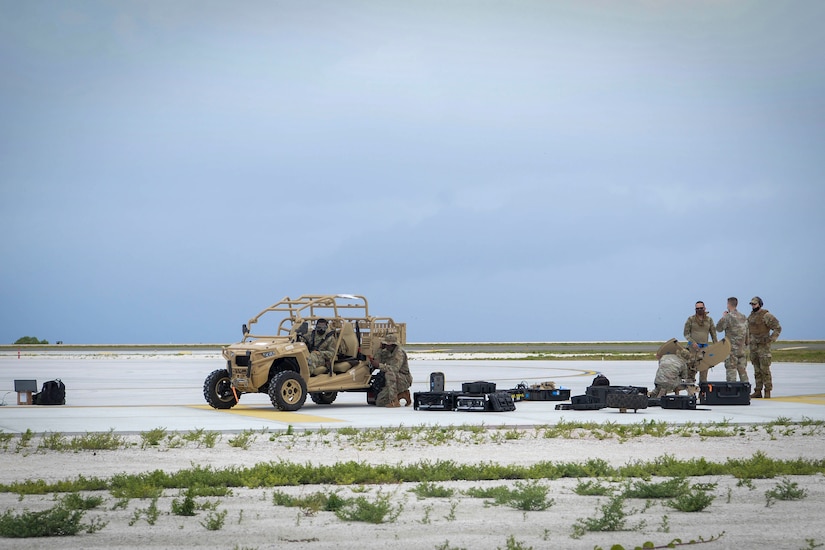
"China is capable of executing any plausible nuclear employment strategy regionally now and will soon be able to do so at intercontinental ranges," Richard said.
Russia, however, remains the "pacing nuclear strategic threat," aggressively engaged in conventional and nuclear capability modernization, which is around 80% complete, he said, adding that the U.S. nuclear modernization effort has not yet started.
Given these threats, modernization of the nuclear triad is the department's top priority, he said.
"We're at a point where end-of-life limitations and [the] cumulative effects of underinvestment in our nuclear deterrent and supporting infrastructure, against the expanding threat, leave me no operational margin. Our nation simply cannot attempt to indefinitely life-extend leftover Cold War weapon systems and successfully carry out the assigned strategy," Richard said.
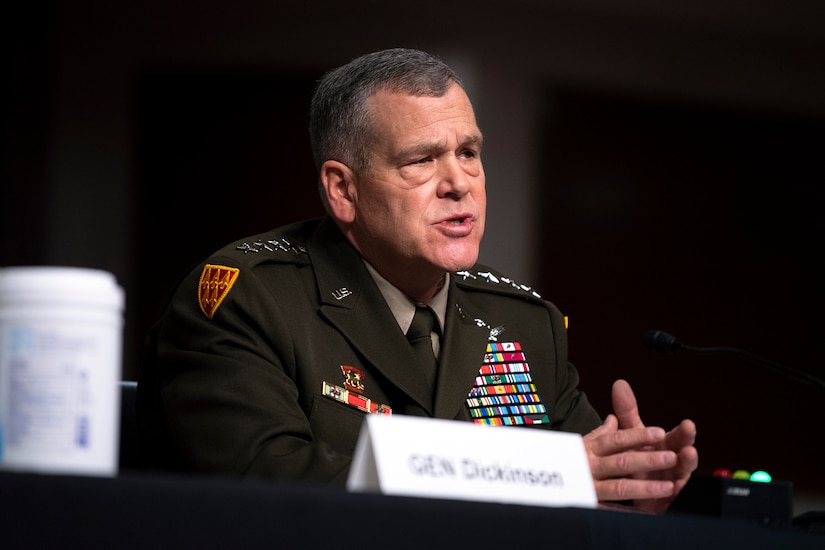
Army Gen. James H. Dickinson, the commander of U.S. Space Command, said that China's space enterprise continues to mature rapidly, presenting a "pacing challenge for us."
They invest heavily in space with more than 400 satellites in orbit today. China is building military space capabilities rapidly, including sensing and communication systems, and numerous anti-satellite weapons, he said, noting that they are doing all this while maintaining their public stance against the weaponization of space.
Similarly, Russia's published military doctrine calls for the employment of weapons "to hold us and allied space assets at risk," Dickinson said.
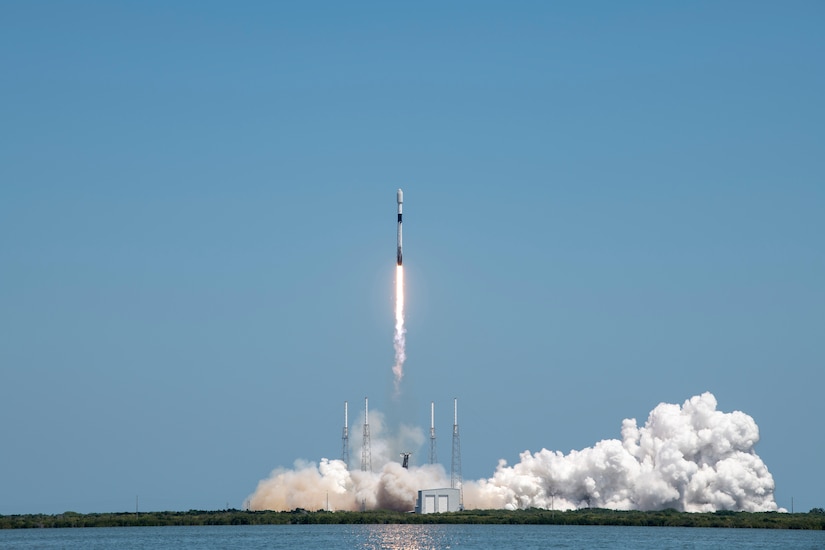
Facing these threats, Spacecom is focused on enhancing existing and developing new space awareness capabilities that will provide better insight into activity throughout the space domain, including potential adversary activities, he said.
"Our intent is to build the appropriate space operational architecture designed to achieve full operational capability, backed by a team of warfighters who can outthink and outmaneuver our adversaries," he added.
Navy Petty Officer 3rd Class Joshua Ferdinand performs maintenance on a carbon dioxide bottle aboard the USS Roosevelt in the Aegean Sea, April 19, 2021.